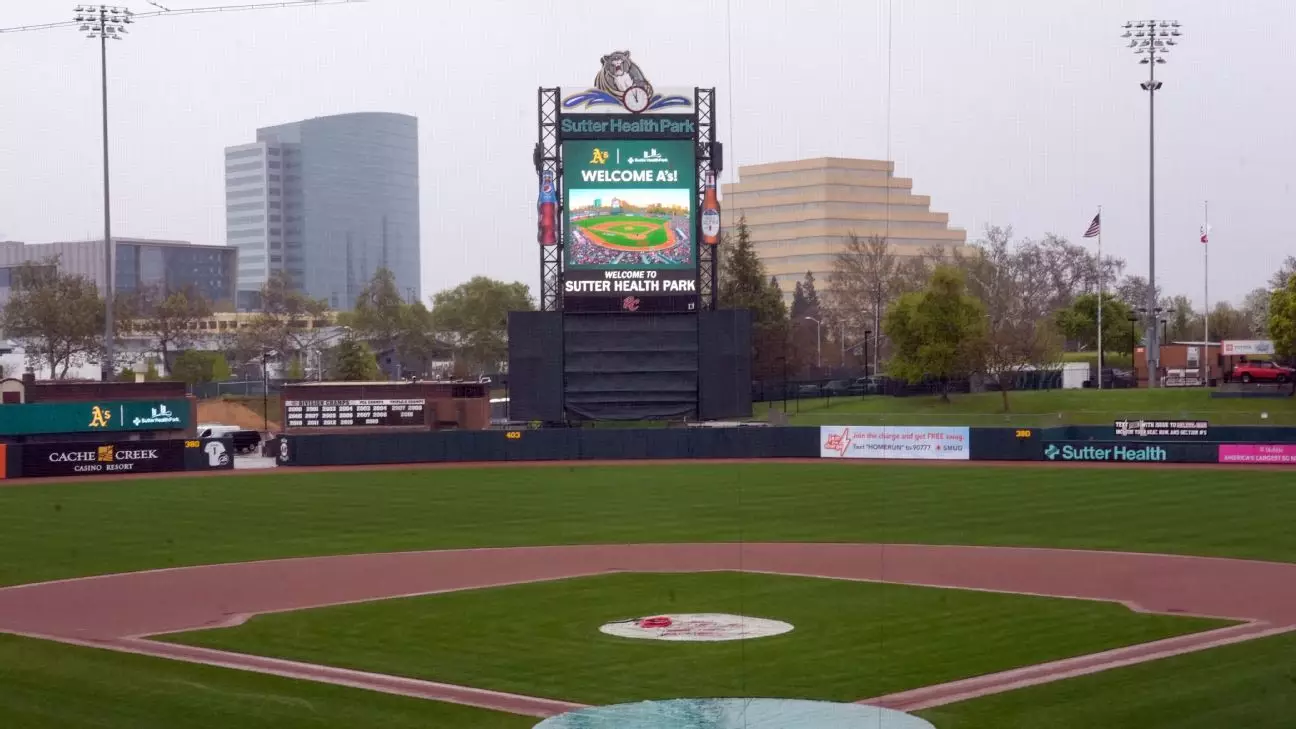As the Sacramento area gears up for what promises to be an exciting baseball season, Sutter Health Park is in the spotlight for unique reasons. This iconic venue will be hosting not only the San Francisco Giants’ Triple-A affiliate, the River Cats, but also the Oakland Athletics, who are playing a temporary three-year residency. This unprecedented arrangement is set to challenge the groundskeeping standards traditionally observed in Major League Baseball. In the age of athlete comfort and performance optimization, the pressures on maintaining a pristine playing surface are monumental and unprecedented.
Murray Cook, a leading authority on baseball field management and president of BrightView Sports Turf, is at the helm of addressing these challenges. By integrating advanced technologies and increasing manpower, the park’s turf maintenance strategy is a compelling blend of innovation and traditional agronomic practices. With the stakes high, especially as both teams will likely cause substantial wear on the turf, the groundwork for thriving grass could serve as a model for future multi-team venues.
The Science of Field Maintenance
At the heart of maintaining a quality field lies a sophisticated understanding of grass management combined with technology. Cook’s insights underscore a critical dynamic: the dual utilization of the ballpark presents unique risks and benefits. With real-time monitoring via drones and advanced sensors, Cook’s team is prepared to ensure no blades of grass are left unattended. These tools will allow the grounds crew to assess conditions continuously and provide the necessary care timely.
But the meticulous monitoring doesn’t merely stop at technology; significant workforce adjustments are also in place. The grounds crew has effectively quadrupled in size, allowing for agile responses to maintenance needs. It’s a fascinating juxtaposition of modern technology and traditional labor; the historic artistry of field management partnered with cutting-edge technology paints a promising picture for the upcoming season.
A New Era: Natural Grass at Sutter Health Park
Interestingly, the decision to use natural grass instead of synthetic surfaces adds another layer of complexity and intrigue. California’s punishing summer heat is notoriously challenging for maintaining natural grass, yet players overwhelmingly prefer it when considering performance factors. Cook’s assertion that “players prefer playing on natural grass” strikes a chord with fans and athletes alike, as it speaks to a commitment to player welfare and sporting integrity.
The strategic pivot to natural grass aligns the venue with the wishes of the players, generating positive momentum as the A’s prepare to play host to the Chicago Cubs. This emphasis on player comfort undoubtedly raises the stakes; sustaining a healthy, vibrant grass field throughout the season speaks not just to aesthetics but to the longevity of athletes’ performance and safety.
Anticipating Challenges: Wear and Repair
However, maintaining natural grass in a high-traffic environment comes with its own set of challenges. High-impact areas such as the pitcher’s mound and home plate demand vigilant attention, as wear and tear will begin manifesting within months. Cook’s plans acknowledge this reality: contingency tactics are critical. The field maintenance squad will not only rely on Sutter Health Park’s immediate resources but will also source backup fields when needed. This proactive stance encapsulates Cook’s forward-thinking mindset and embrace of uncharted territory in sports management.
Notably, the advanced irrigation and air circulation systems incorporated into the field add a layer of resilience to the grass, promoting healthy root growth and innovative water management. These forward-thinking methodologies serve as benchmarks, potentially influencing upkeep practices throughout Major League Baseball.
Community Engagement and Experience
Community involvement further enhances Sutter Health Park’s electric atmosphere. The anticipation surrounding games isn’t solely about the teams playing; it intertwines with the collective spirit of Sacramento’s residents. Giving fans a glimpse into the collaborative efforts behind the scenes adds a richer narrative to the sports experience. Cook’s reports of positive feedback from fans underscore this connection, reminding us that baseball is not just a game; it’s a community event fueled by shared experiences and extraordinary human effort.
This spirit of camaraderie will reflect in every game played this spring, as the grounds crew’s labor melds into each pitch and every swing. The confluence of natural elements, skilled personnel, and community engagement could pave the way for a transformative chapter in Sacramento’s sporting history. The dual presence of the River Cats and the A’s heralds not just new chapters for both teams, but potentially, an evolution in how baseball fields are maintained and celebrated.

